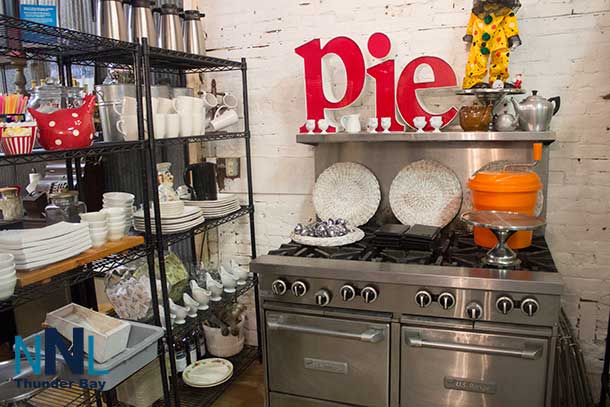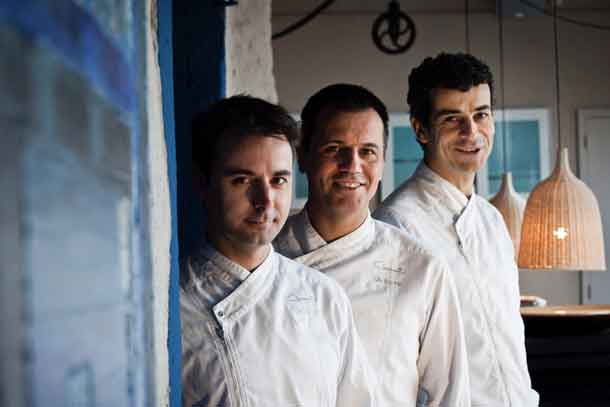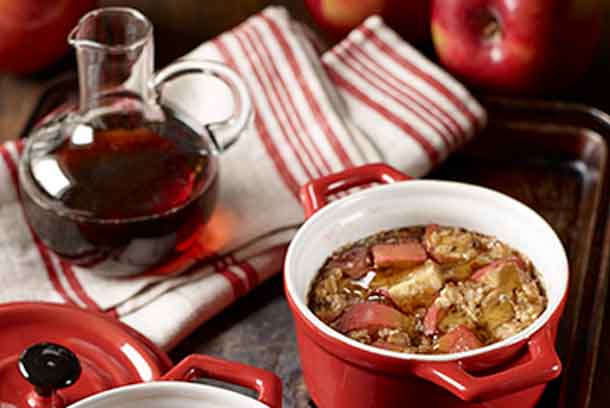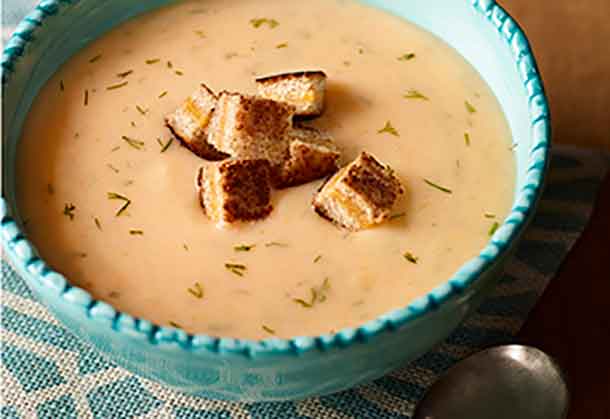
THUNDER BAY – FOOD NOW – I’ve lived in Italy off and on since the 1970s, eating my way up and down the peninsula, shopping the markets, raising the vegetables in my own gardens, prepping and cooking the food, studying the history and meeting the home cooks and chefs who carry the treasures of the Italian table in their heads, hearts and hands. I’ve learned a lot, in short, about Italian cooking. But almost everything I know, everything I’ve learned, ultimately traces back to one source — Marcella Hazan.
Her first book, “The Classic Italian Cook Book,” published by Knopf in 1973 and acquired by me a few years later as a gift from an erstwhile husband when we moved to Rome, truly opened the doors of my kitchen to Italian cooking. I have been grateful ever since. I consult that book and her many others to this day, often uncovering unexpected tips, ideas and information. Now I have a new treasure in my Marcella library — “Ingredienti” — her husband, Victor’s, tribute to his wife of nearly 60 years, who died in 2013.
A true Italian kitchen, in Marcella’s words
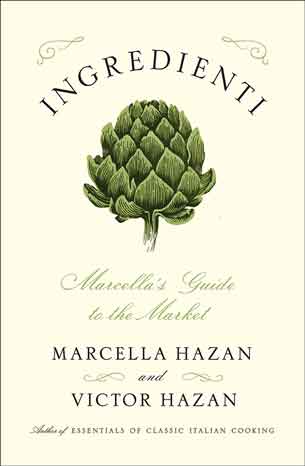
This invaluable little book is based on Marcella’s notebooks, discovered by Victor after her death and assembled by him into usable form. A caution: It is not a cookbook, though any number of cooking tips are scattered throughout. It is, in fact, a series of intelligent, well-informed essays on critical ingredients for an Italian kitchen, from “Produce” (artichokes, arugula, etc. ) to “The Essential Pantry” (pasta, of course, olive oil, Parmigiano, etc.) to “Salumi” (all the cured meats — prosciutto, guanciale, pancetta, and, as they say in Italian, via dicendo).
It’s an open secret in the food world that Victor Hazan was the defining voice in his wife’s long and remarkable career. While the brilliant ideas, sensible advice and enormous range of recipes Marcella produced all came from her inspirations and her own kitchens, it was Victor who developed the clear, comprehensive prose that distinguished her seven cookbooks and countless magazine articles. Throughout her career, she was a pervasive influence on America’s understanding of Italian food, yet she never had a restaurant, never starred in a television show and almost never appeared in public to give a talk or do a demonstration. What a different world she lived in, but she ruled that world for 40 years and continues, for many of us, to dominate it to this day.
An inspiring force
I met Marcella in the 1970s after “The Classic Italian Cook Book” was published. In fact, the first food story I ever wrote was an interview with the Hazans at their cooking school in Bologna, Italy, in a hotel across from the train station that was also headquarters for the Bologna division of Weight Watchers International (providing a memorable lead sentence for my story). Eight or 10 students were in the class, one of whom was planning to open a “northern Italian” restaurant somewhere in the upper Midwest and had come to take a weeklong course to understand what she was getting into. Another was a man who claimed to detest olive oil. “I don’t know what he’s doing in an Italian cooking class,” Marcella murmured, barely sotto voce, in her inimitably gravelly voice.
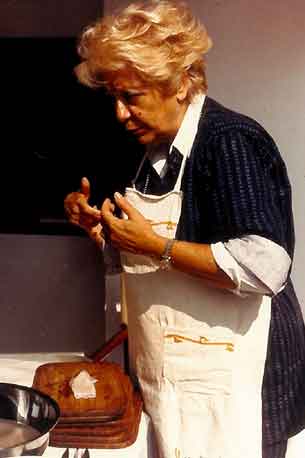
The menu for the class was simple, though some techniques were not. Students struggled to master shaping tortellini, the devilishly difficult little hat-shaped filled pasta that is the pride of Bologna’s sfogline, or pasta-makers. But there was also a traditional arrosto di maiale al latte, pork loin braised in milk, a surprisingly simple dish, flavored with nothing but salt and pepper, rich and succulent. A dish first described by Artusi, the Fanny Farmer of 19th-century Italian cooking, it was introduced to Americans by Marcella — and it deserves to be revived.
That was not my only encounter with the Hazans. In fact, I remember almost every time I spent with them simply because from each encounter, I took away a piece of invaluable knowledge. But one, in particular, stands out: In the late 1980s, when I was working as a food journalist in New York, Marcella called to invite me to dinner. “I want to show you something about pasta,” she said. The next evening, in the Hazans’ comfortable East Side apartment, she presented her dinner guests with two plates of pasta, identically dressed very simply with butter, a grating of Parmigiano Reggiano and a light sprinkle of herbs, nothing to interfere with the flavors of the pasta. One plate of tagliatelle had been made entirely by hand, rolled out on a board “until the pasta is almost paper thin and transparent,” as she says in that first book. The tagliatelle on the second plate were what you and I might call handmade, but rolled through a hand-cranked pasta machine. In the machine, as she wrote, “something happens to its composition … that gives the dough an ever so slightly slippery texture.” The words are Victor’s, but the sentiment, precise and to the point, is Marcella’s to the core.
And you know what? She was absolutely right!
Arrosto di maiale al latte (Pork Loin Braised in Milk)
This recipe was published in Marcella Hazan’s “The Classic Italian Cook Book” (Knopf 1973)
Yield: For 6 persons
Ingredients
2 tablespoons butter
2 tablespoons vegetable oil
2 pounds pork loin, in one piece, with some fat on it, secretly tied
1 teaspoon salt
Freshly ground pepper, 3 or 4 twists of the mill
2 1/2 cups milk
Directions
Heat the butter and oil over medium-high heat in a casserole large enough to just contain the pork. When the butter foam subsides, add the meat, fat side facing down. Brown thoroughly on all sides, lowering the heat if the butter starts to turn dark brown.
Add the salt, pepper and milk. (Add the milk slowly, otherwise it may boil over.) Shortly after the milk comes to a boil, turn the heat down to medium, cover, but not tightly, with the lid partly askew, and cook slowly for about 1 1/2 to 2 hours, until the meat is easily pierced by a fork. Turn and baste the meat from time to time, and, if necessary, add a little more milk. By the time the meat is cooked, the milk should have coagulated into small nut-brown clusters. If it is still pale in color, uncover the pot, raise the heat to high, and cook briskly until it darkens.
Remove the meat to a cutting board and allow to cool off slightly for a few minutes. Remove the trussing string, carve into slices 3/8-inch thick, and arrange them on a warm platter. Draw off most of the fat from the pot with a spoon and discard, being careful not to toss any of the coagulated milk clusters. Taste and correct for salt. (There may be as much as 1 to 1 1/2 cups of fat to be removed.) Add 2 or 3 tablespoons of warm water, turn the heat on high, and boil away the water while scraping and loosening all the cooking residue in the pot. Spoon the sauce over the sliced pork and serve immediately.
Copyright 2016 Nancy Harmon Jenkins via Zester Daily and Reuters Media Express



